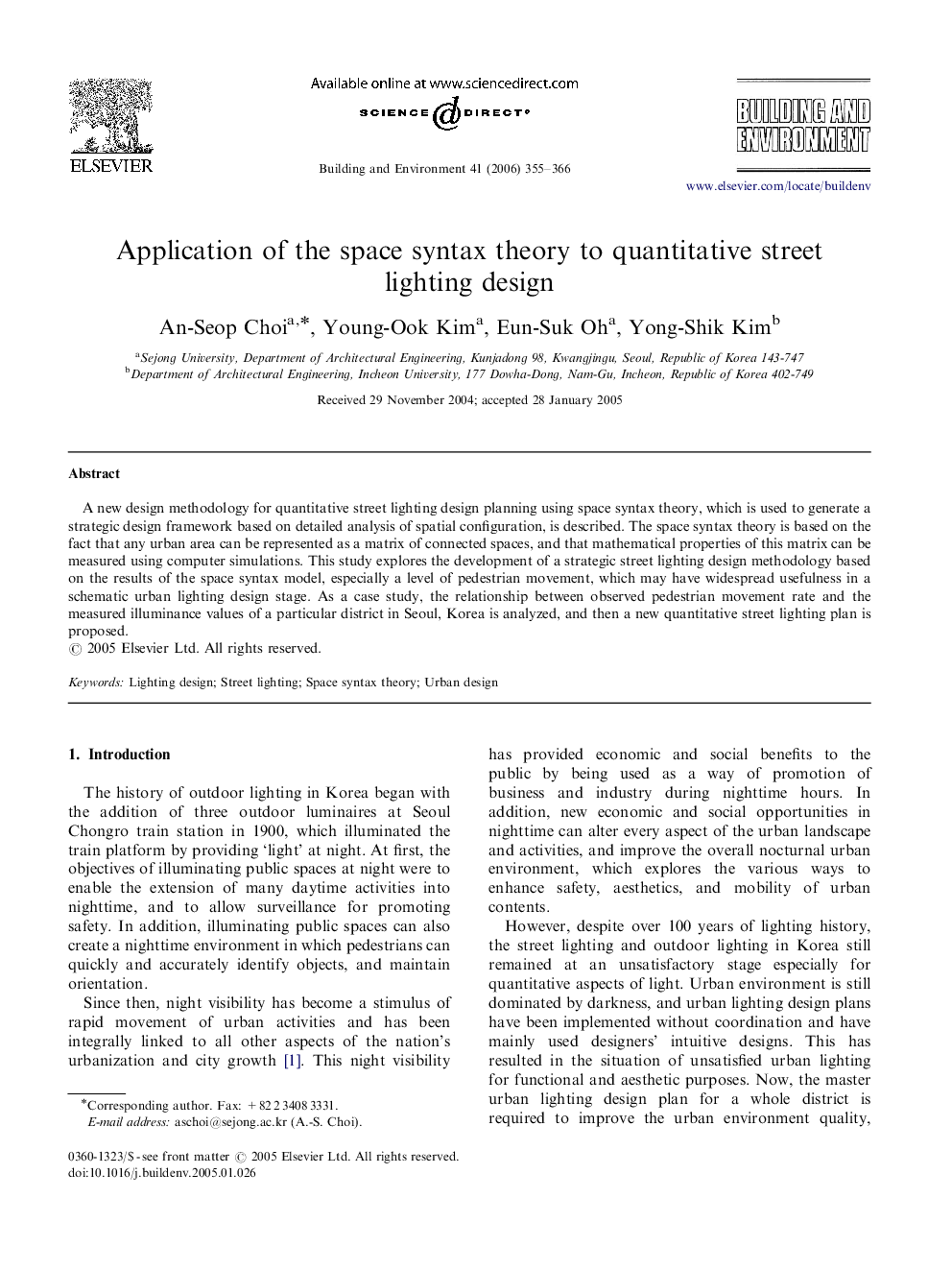| کد مقاله | کد نشریه | سال انتشار | مقاله انگلیسی | نسخه تمام متن |
|---|---|---|---|---|
| 250479 | 502680 | 2006 | 12 صفحه PDF | دانلود رایگان |

A new design methodology for quantitative street lighting design planning using space syntax theory, which is used to generate a strategic design framework based on detailed analysis of spatial configuration, is described. The space syntax theory is based on the fact that any urban area can be represented as a matrix of connected spaces, and that mathematical properties of this matrix can be measured using computer simulations. This study explores the development of a strategic street lighting design methodology based on the results of the space syntax model, especially a level of pedestrian movement, which may have widespread usefulness in a schematic urban lighting design stage. As a case study, the relationship between observed pedestrian movement rate and the measured illuminance values of a particular district in Seoul, Korea is analyzed, and then a new quantitative street lighting plan is proposed.
Journal: Building and Environment - Volume 41, Issue 3, March 2006, Pages 355–366